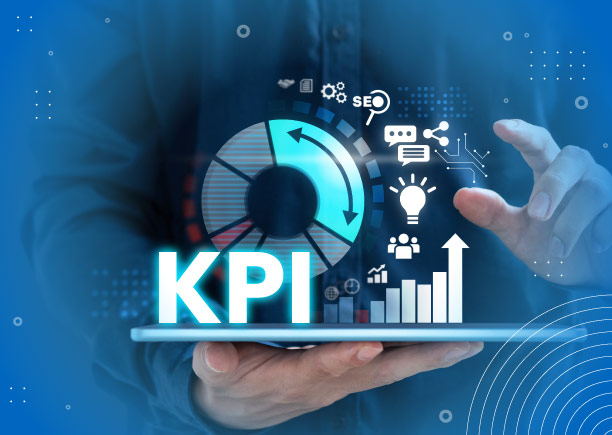Table of Contents
Customer Service KPIs
Customer service is a critical aspect of any business, as it is essential to ensure customer satisfaction and retention. To manage customer service effectively, companies need to monitor and measure their performance using Key Performance Indicators (KPIs). KPIs help businesses identify areas of improvement, track progress, and achieve customer service goals.
20 KPIs for Customer Service
In this blog post, we will discuss 20 KPIs for customer service that businesses should be aware of.
- Customer Satisfaction (CSAT) Score: This KPI measures how satisfied customers are with a company’s products or services. It is typically measured through surveys or feedback forms.
- Net Promoter Score (NPS): NPS measures customer loyalty by asking customers how likely they are to recommend a company to others. The score ranges from -100 to 100, with higher scores indicating higher levels of customer loyalty.
- First Response Time (FRT): FRT measures the time it takes for a customer service representative to respond to a customer inquiry or complaint. It is essential to ensure a prompt response to maintain customer satisfaction.
- Average Handle Time (AHT): AHT measures the time it takes to handle a customer inquiry or complaint. It includes the time spent on talking to the customer, researching the issue, and resolving it.
- Abandoned Call Rate: This KPI measures the number of customers who hang up before their call is answered. A high abandoned call rate can indicate poor customer service and result in lost business.
- Average Wait Time (AWT): AWT measures the time a customer spends on hold before their call is answered. Long wait times can lead to customer frustration and dissatisfaction.
- First Contact Resolution (FCR): FCR measures the percentage of customer inquiries or complaints that are resolved on the first contact. A high FCR rate indicates effective customer service desk and can improve customer satisfaction.
- Customer Retention Rate: This KPI measures the percentage of customers who continue to use a company’s products or services over time. A high retention rate indicates customer loyalty and satisfaction.
- Customer Lifetime Value (CLTV): CLTV measures the total revenue a customer is expected to generate for a company over their lifetime. It helps companies identify the most valuable customers and allocate resources accordingly.
- Service Level Agreement (SLA) Compliance: SLA compliance measures the percentage of customer inquiries or complaints that are resolved within a set timeframe. It is important to meet SLAs to maintain customer satisfaction.
- Upsell/Cross-sell Rate: This KPI measures the percentage of customers who purchase additional products or services from a company. It is an indicator of customer loyalty and can increase revenue.
- Escalation Rate: Escalation rate measures the percentage of customer inquiries or complaints that are escalated to a higher level of support. A high escalation rate can indicate a need for additional training or support resources.
- Average Resolution Time (ART): ART measures the time it takes to resolve a customer inquiry or complaint. A high ART can indicate inefficiencies in the customer service process.
- Contact Quality Score (CQS): CQS measures the quality of customer service interactions, including tone of voice, empathy, and professionalism. It helps companies identify areas for improvement in customer service desk training.
- Customer Effort Score (CES): CES measures the ease of doing business with a company. It helps companies identify areas for improvement in customer service processes and reduce customer effort.
- Social Media Sentiment: Social media sentiment measures the positive or negative sentiment expressed by customers on social media channels. It helps companies monitor and respond to customer feedback.
- Response Rate: Response rate measures the percentage of customer inquiries or complaints that receive a response from a company. It is important to respond to all customer inquiries and complaints to maintain customer satisfaction.
- Customer Churn Rate: This KPI measures the percentage of customers who stop using a company’s products or services over time. A high churn rate indicates a need to improve customer service and retention efforts.
- Service Cost per Contact: Service cost per contact measures the cost of providing customer service, including salaries, technology, and other resources. It helps companies identify areas for cost savings and efficiency.
- Employee Satisfaction (ESAT) Score: ESAT measures the satisfaction of customer service employees. It is essential to ensure employee satisfaction to maintain high levels of customer service and reduce turnover.
To implement these KPIs effectively with helpdesk software or knowledgebase software, businesses need to establish clear goals and objectives for their customer service desk team. It is important to communicate these goals and objectives clearly to all customer service employees and provide them with the necessary training and resources to achieve them.
Regular monitoring and reporting of KPIs are also critical to ensure that progress is being made towards achieving these goals. Businesses can use various ticket management system and customer support software to track KPIs and generate reports automatically. These reports can be used to identify trends and areas for improvement in customer retention and service desk performance.
Furthermore, it is essential to involve all stakeholders in the process, including customers, managers, and employees. Customer feedback is a valuable source of information that can help companies identify areas for improvement in their customer service processes.
Managers should also provide regular feedback and coaching to customer service employees to ensure they are meeting performance standards and achieving their goals. This can be done through regular performance reviews, one-on-one meetings, and coaching sessions.
Wind Up
In conclusion, monitoring and measuring customer service performance using KPIs is essential for businesses to maintain customer satisfaction and achieve their goals. By tracking these 20 KPIs, companies can identify areas for improvement and allocate resources accordingly to optimize their customer service processes.
Remember that effective customer service can improve customer loyalty and drive revenue growth, so it is essential to prioritize and invest in this aspect of your business.




